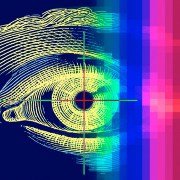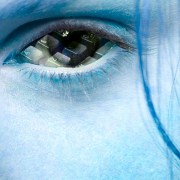The corneas are the most sensitive parts of the human body. The tiniest scratch or speck of dust is painful, and a more serious injury can be excruciating. Located in front of the iris and pupil, the cornea is the first structure that light hits as it enters the eye. The cornea must be perfectly clear to allow for optimum vision. This clarity, along with its position at the very front of the eye, makes it highly vulnerable to injury. Its rich supply of nerve endings causes us to protect our eyes enthusiastically.
A corneal abrasion is a scraping or scratching injury to the surface of the cornea. It may be caused by a fingernail, mascara brush, tree branch, poorly fitting contact lens, piece of paper, sand, grit, or any number of other objects that come too close to the eyes. A large abrasion may hurt enough to cause the eyelids to go into spasm, closing tightly so that you may not be able to open your eye. If this happens, get to a doctor as soon as possible for some anesthetic eye drops.
Fortunately, corneas heal rapidly. A small abrasion may heal enough to stop hurting within a few hours. Larger ones are back to almost normal within a week. But it takes several weeks or even months for the newly healed corneal tissue to attach itself firmly to the underlying layers. It is important to protect the eyes from rubbing during this time. When drying your face with a towel, just pat the eyes very gently.
Your eye doctor may want to examine a corneal abrasion to evaluate the extent of damage. He or she may use a fluorescein dye to make the abrasion easier to see. Treatments include antibiotic eye drops or ointment, dilating eye drops to keep the iris constrictor muscle relaxed, eye patches, and pain medication. Over the counter drugs may be helpful, or you may get a prescription pain medication for more serious abrasions.
Sometimes the area of the cornea that was injured may break down again long after it initially heals. This complication is called recurrent corneal erosion. Treatment for this condition includes removal of dead corneal tissue by an eye doctor. Artificial tear eye drops and lubricating ointments can help prevent recurring problems.
Eye pain is always a good reason to see an eye doctor. Anesthetic eye drops are not available over the counter because the eye is vulnerable to further injury when you don't feel objects that touch the cornea.
Reference:
Melvin L. Rubin, MD, and Lawrence A. Winograd, MD, “Taking Care of Your Eyes”, Triad Publishing Co., 2003.
Linda Fugate is a scientist and writer in Austin, Texas. She has a Ph.D. in Physics and an M.S. in Macromolecular Science and Engineering. Her background includes academic and industrial research in materials science. She currently writes song lyrics and health articles.





Add a CommentComments
There are no comments yet. Be the first one and get the conversation started!